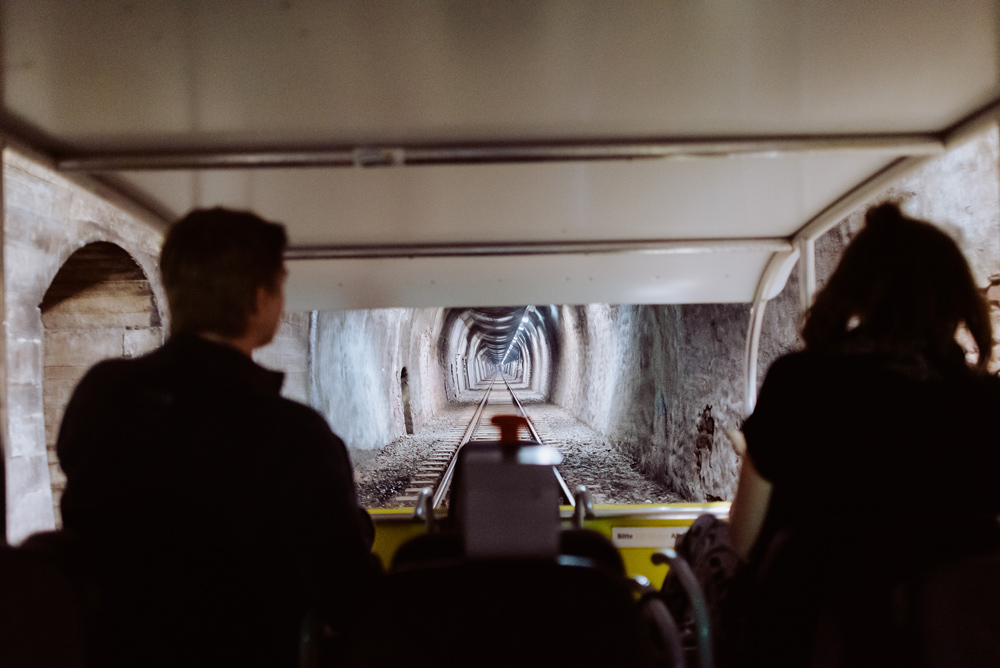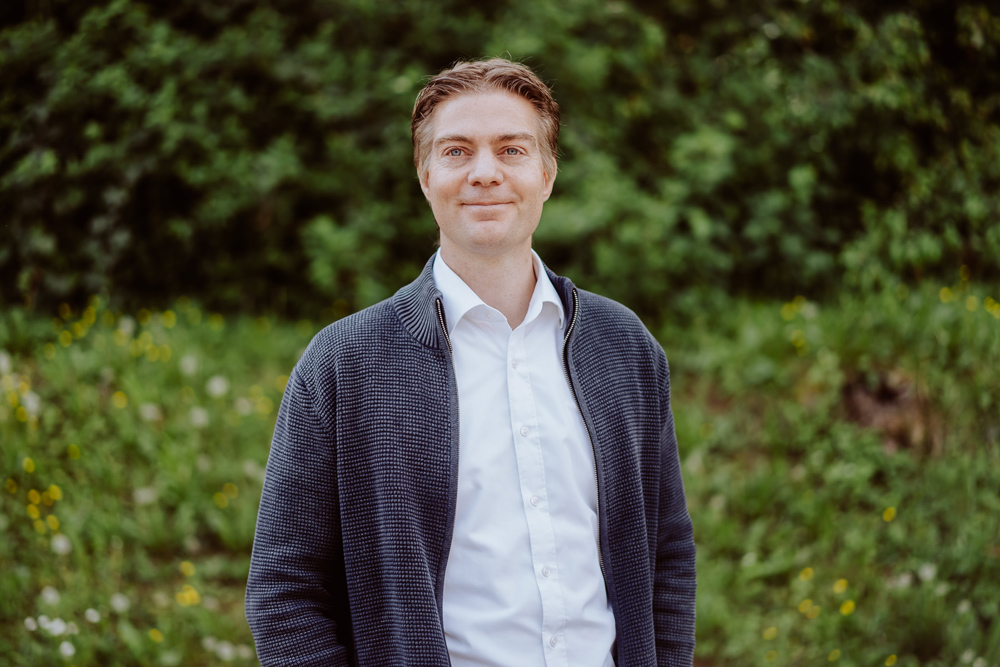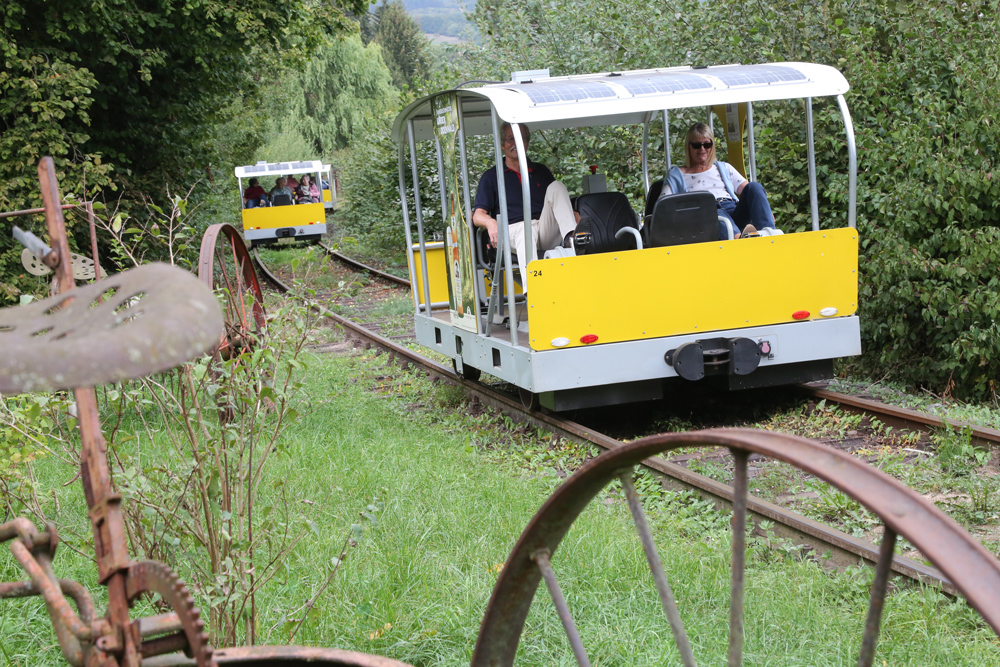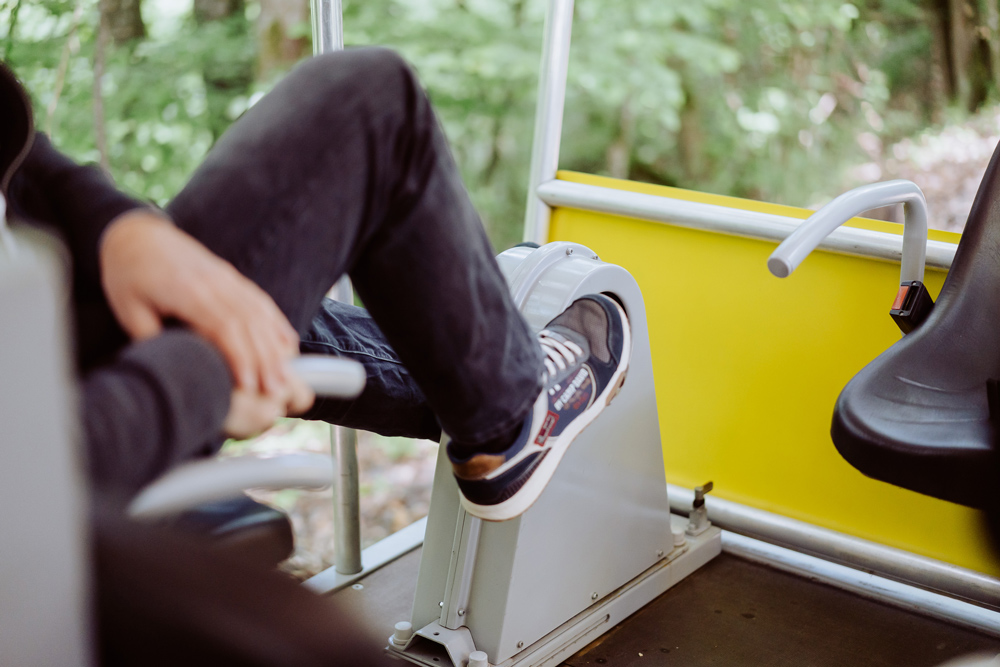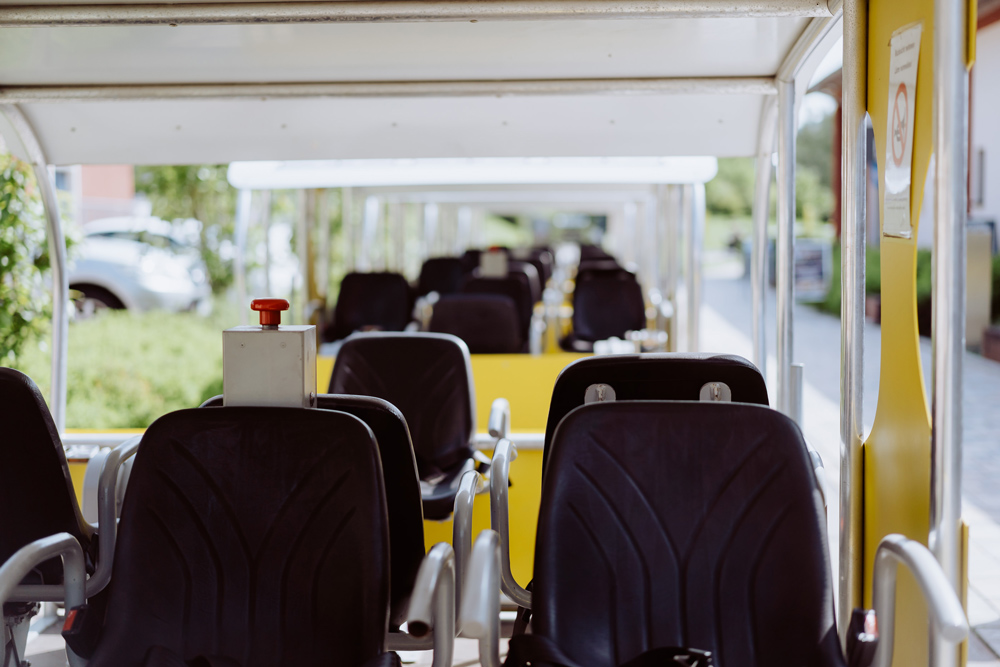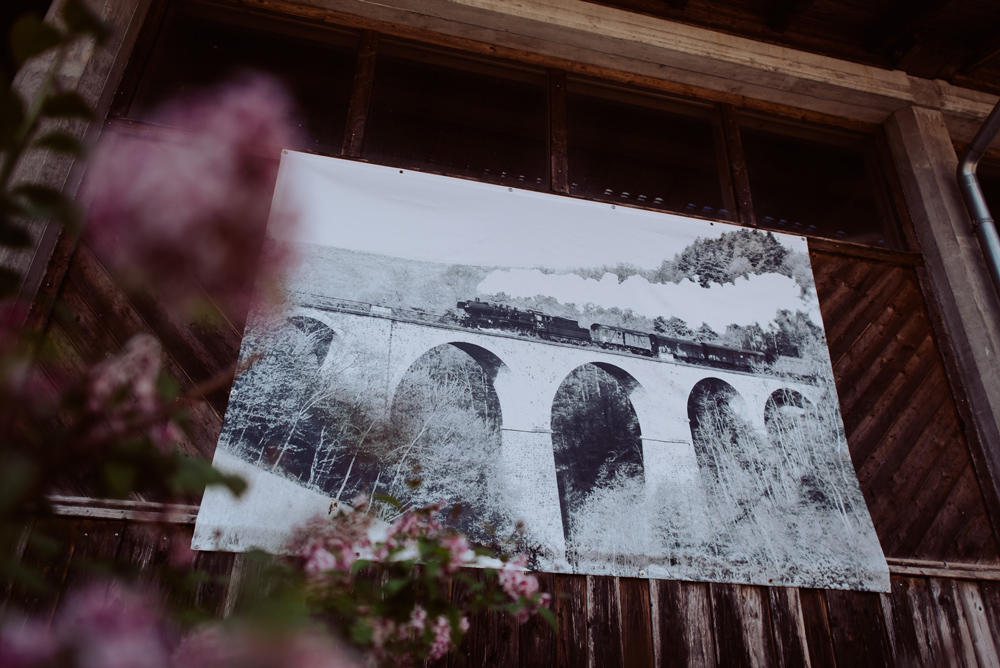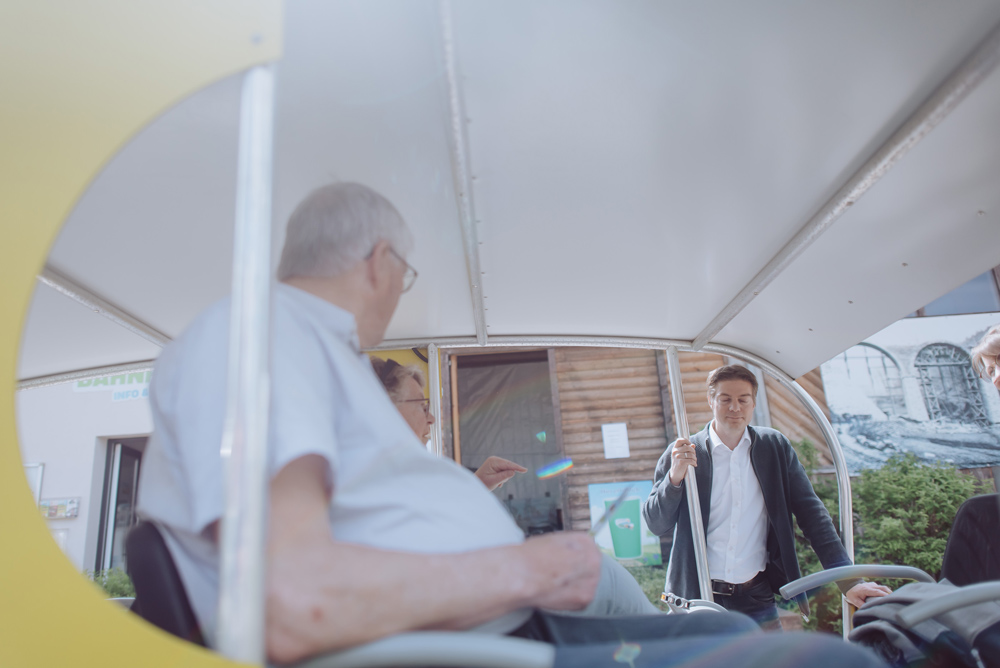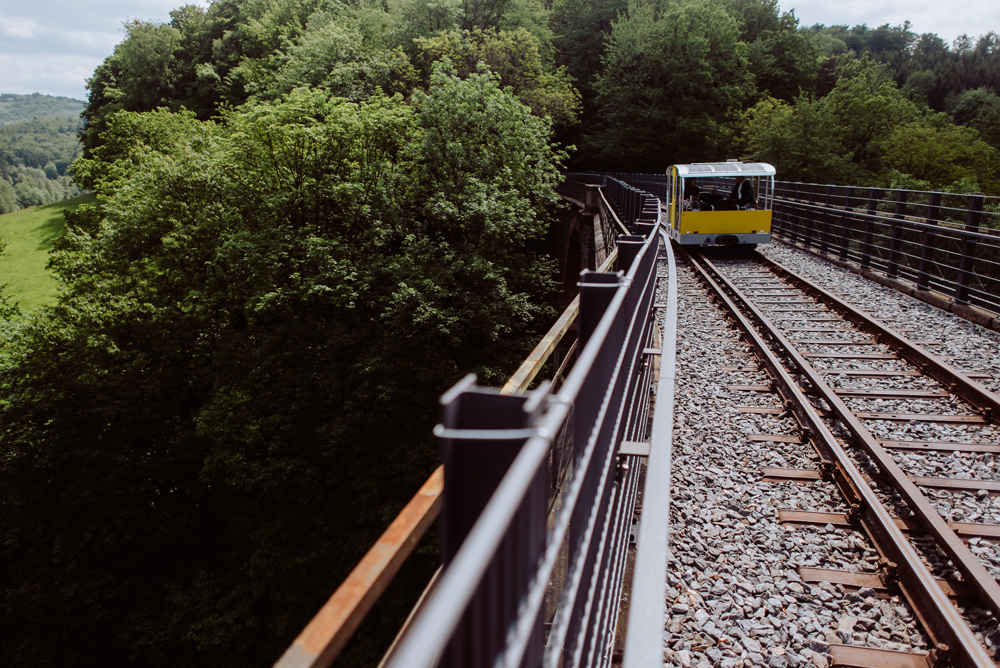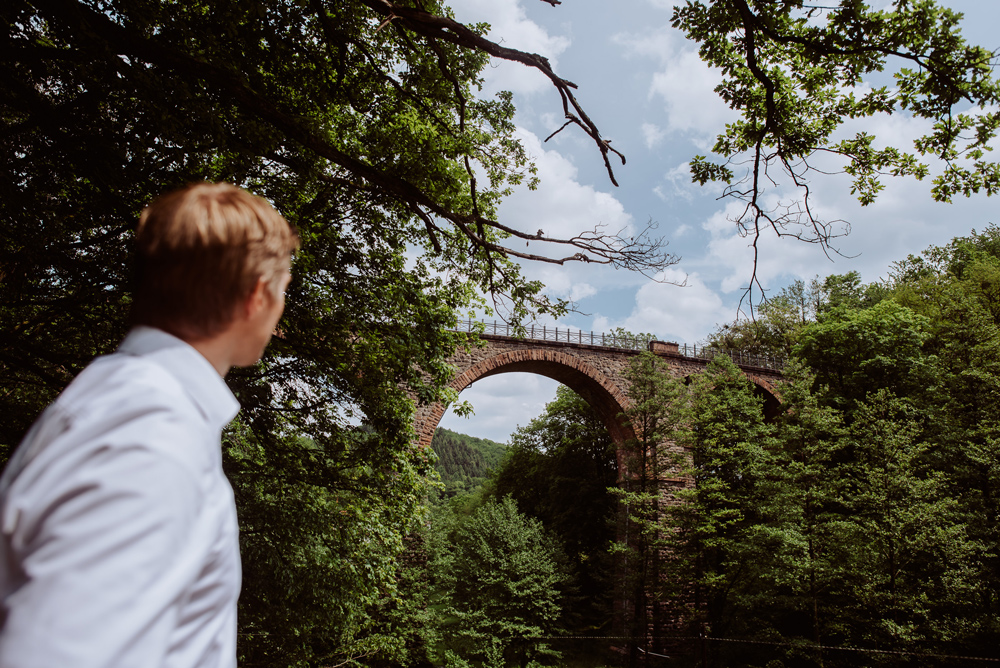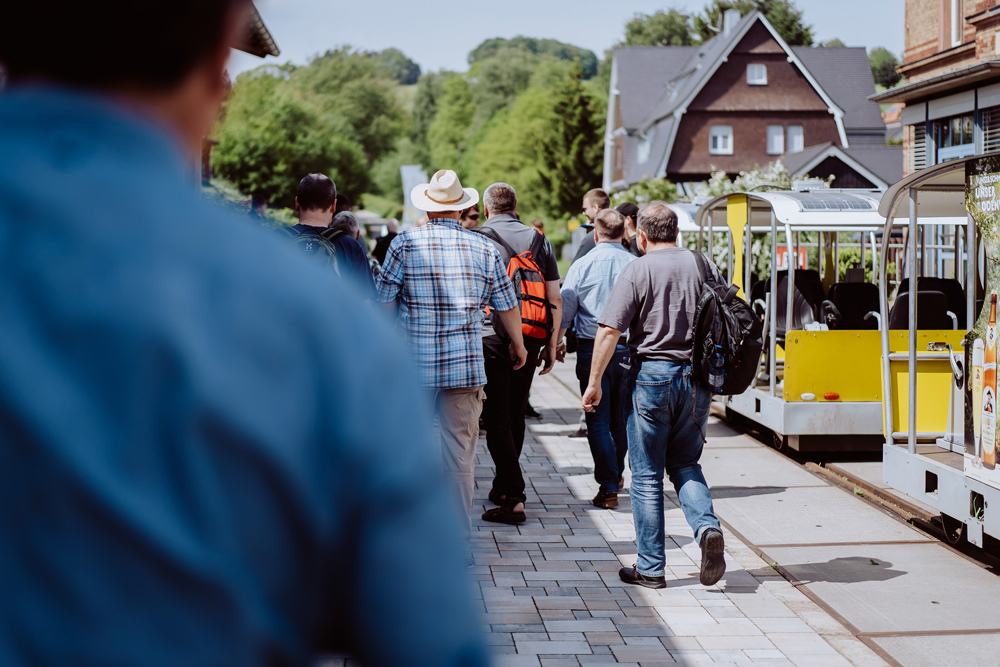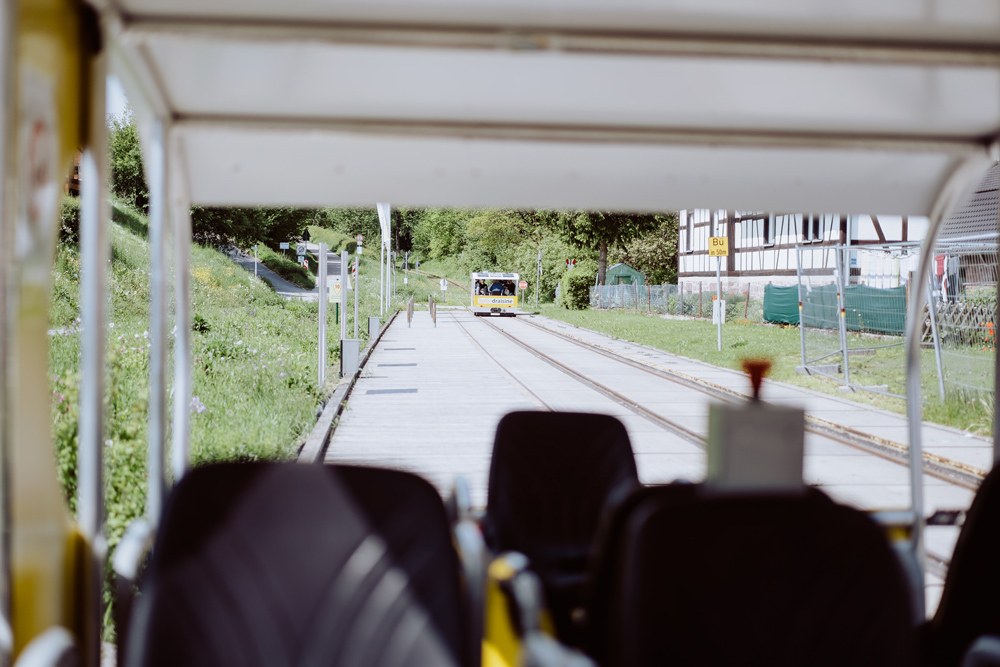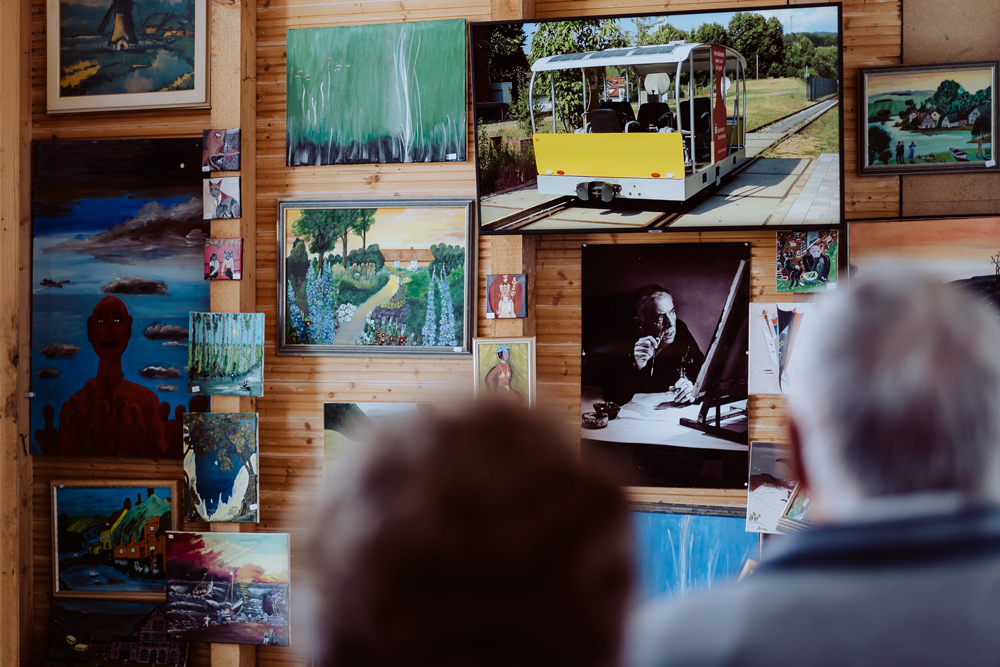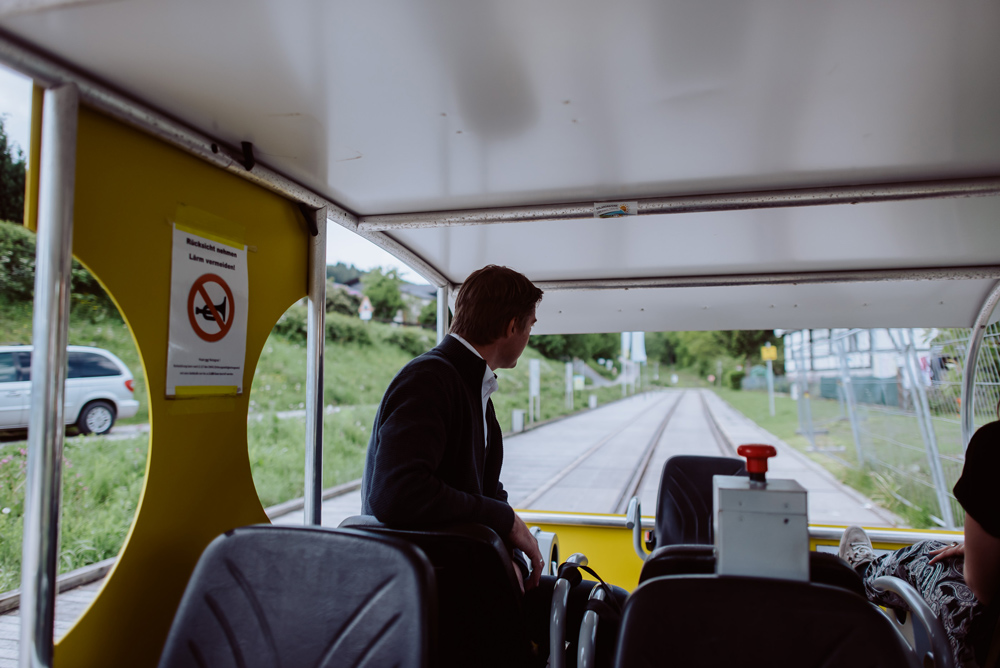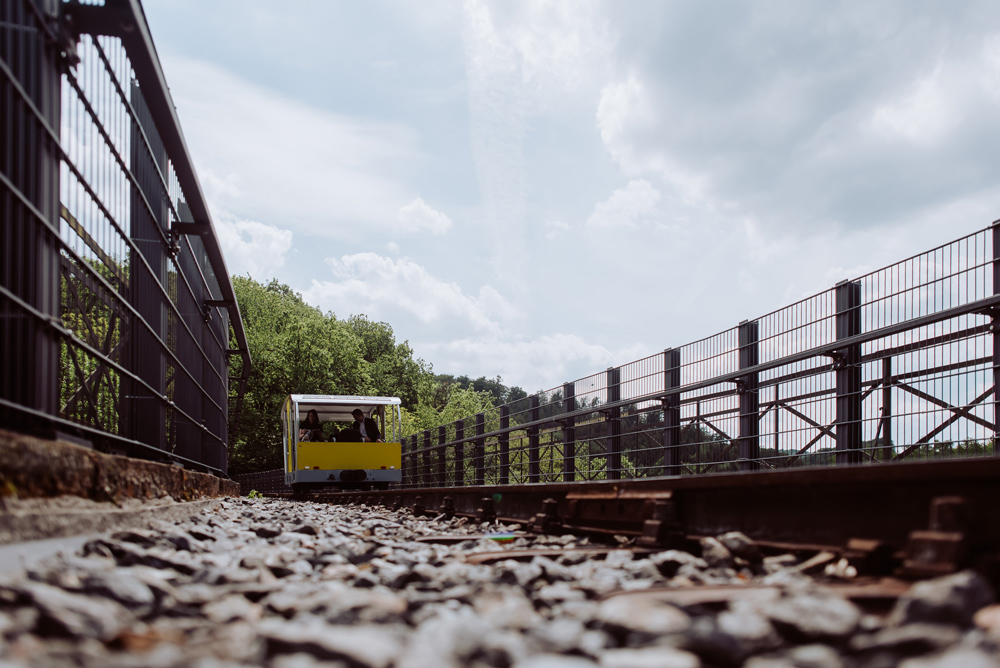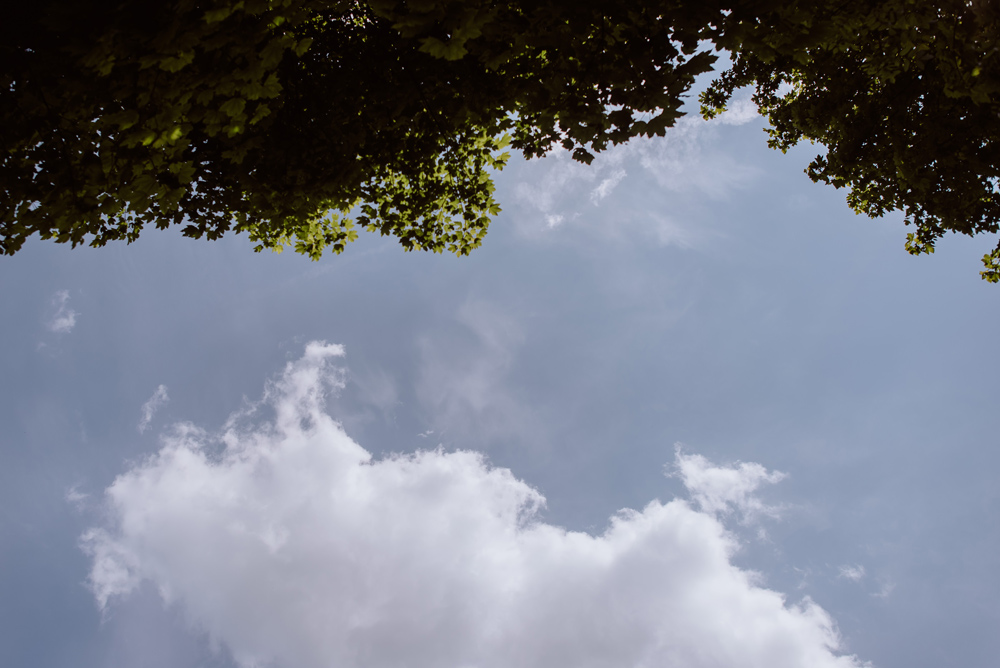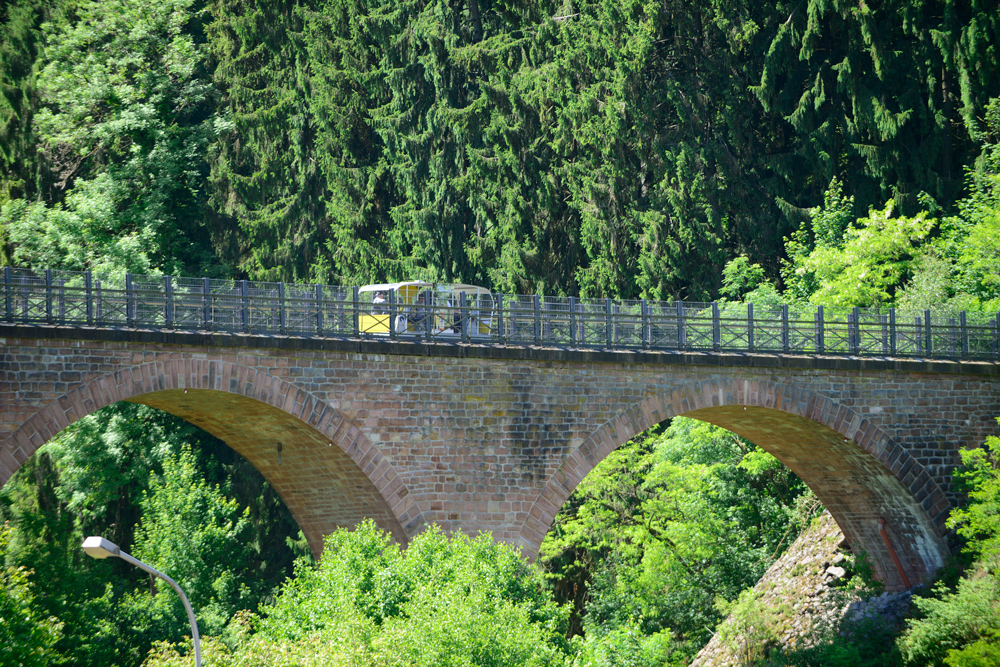Through the forest, through a tunnel and over viaducts: Solar powered rail trolleys now run between Mörlenbach and Wald-Michelbach, in the Forest of Odes, via the decommissioned forest train line. Managing director Holger Kahl has brought many parts of his personal history into the project.
It is quite cool in the tunnel, making it a bit easier to struggle through the 697 meters without sunlight. The lights on the ceiling illuminate the wet rocks and sandstone around us, while we slowly approach the sunlight ahead, which powers the trolley. Over a length of 9,6 kilometers, between Mörlenbach and Wald-Michelbach, tourists can travel the decommissioned and landmarked old forest train line, using trolleys. On the roofs of the yellow hybrid trolleys solar panels have been installed. Each trolley offers seats for up to eight passengers, with up to four people pedaling. In the end though it only needs one person pedaling though, but we shall get to that later.
The forest train line was active beginning in 1901, between Wahlen and Mörlenbach, where it connected with the Weschnitztal line. The last passenger train was initiated in 1983, and beginning in the mid eighties Coronet, a household goods manufacturer from the region, used the section between Mörlenbach and Unter-Waldmichelbach, until the last freight car left the tracks on March 31st, 1994. “The tracks were badly deteriorated,” says Holger Kahl, managing director of the non-profit Überwaldbahn GmbH.
When the railway company planned to sell parts of the grounds, the Bergstraße district, as well as the communities Michelbach, Mörlenbach and Abtsteinach decided to buy the train line – and to maintain it. “We definitely had the idea of using the line for public transport in the future,” Kahl explains. But in the meantime they needed a different form of use. A hiking and bike trail didn’t make sense, because of the tracks, and trolleys which rely on the muscular effort of the driver alone, couldn’t take on the steep inclines. This was when the idea of using electric motors and solar power came about. Which we are told, were the world’s first of the kind at that time.
